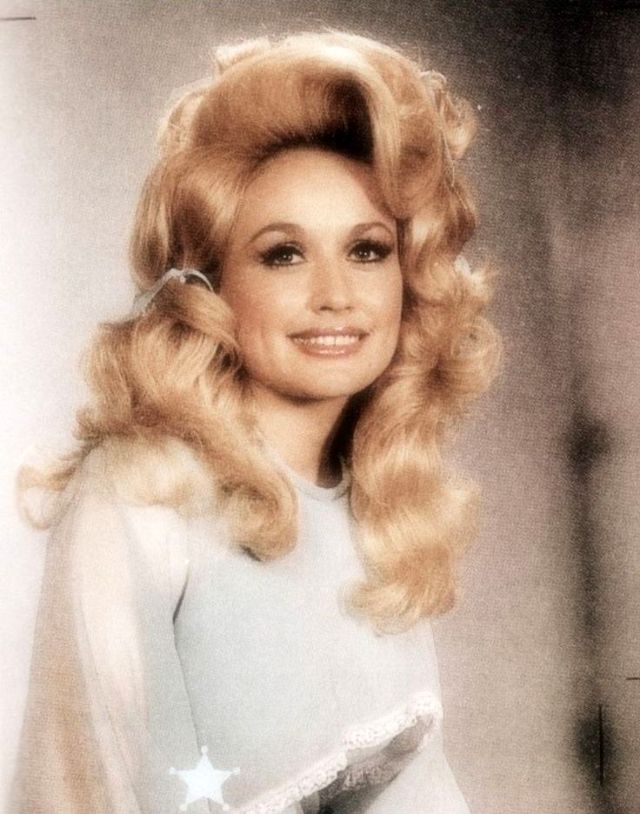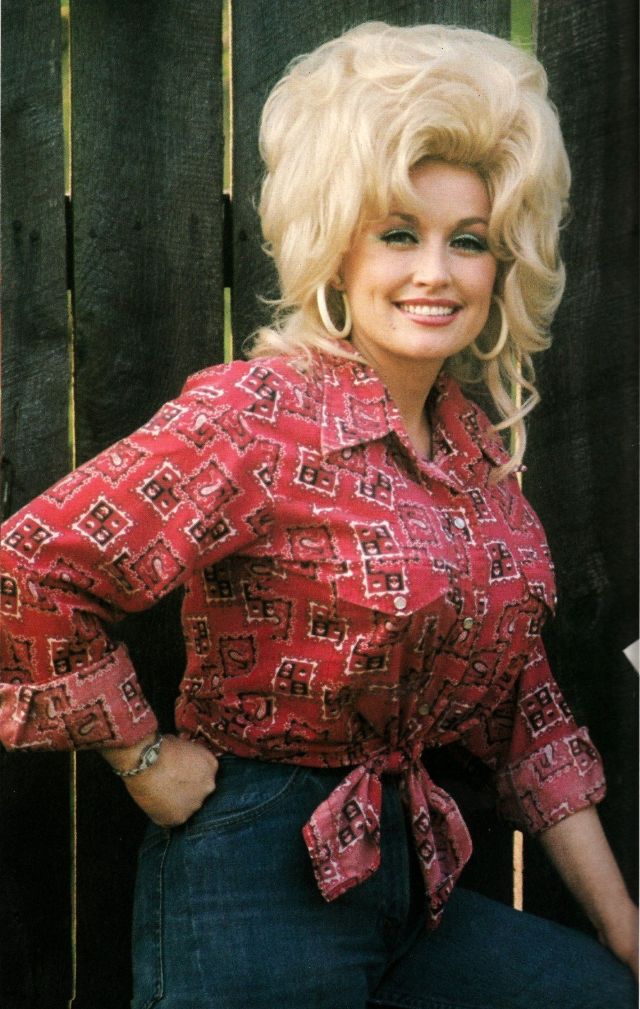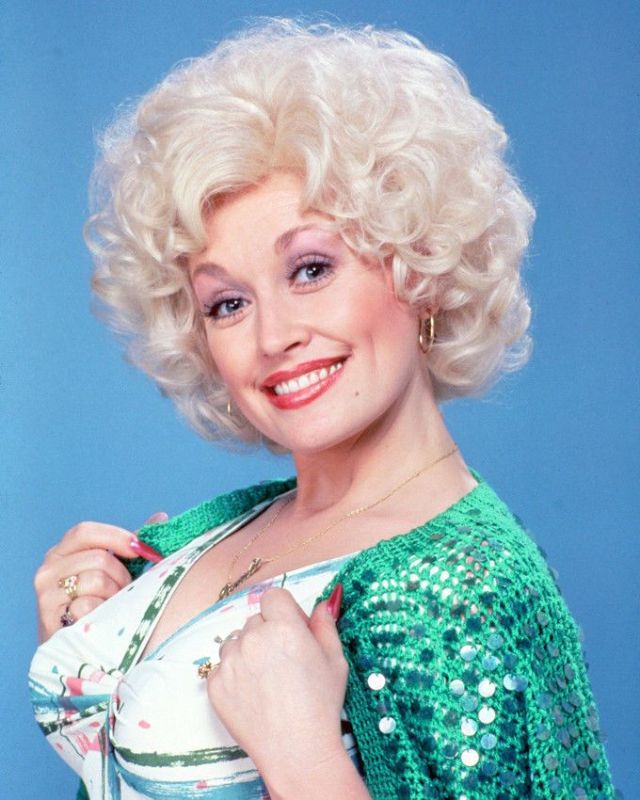Dolly Parton is a name that has transcended time and continues to captivate hearts with her unmistakable voice, infectious spirit, and timeless beauty.
As one of the most iconic and influential country music stars of all time, Dolly’s journey from humble beginnings in the Great Smoky Mountains of Tennessee to becoming a global sensation is nothing short of remarkable.
Her music has touched the souls of millions, and her infectious personality and authentic charm have won over countless more.
With vintage photos that capture her essence, we take a glimpse into the life and legacy of this legendary artist, a woman whose impact on the world extends far beyond the boundaries of the music industry.
 After achieving success as a songwriter for others, Parton made her album debut in 1967 with Hello, I’m Dolly, which led to success during the remainder of the 1960s (both as a solo artist and with a series of duet albums with Porter Wagoner), before her sales and chart peak came during the 1970s and continued into the 1980s.
After achieving success as a songwriter for others, Parton made her album debut in 1967 with Hello, I’m Dolly, which led to success during the remainder of the 1960s (both as a solo artist and with a series of duet albums with Porter Wagoner), before her sales and chart peak came during the 1970s and continued into the 1980s.
Parton’s albums in the 1990s did not sell as well, but she achieved commercial success again in the new millennium and has released albums on various independent labels since 2000, including her own label, Dolly Records.
With a career spanning over fifty years, Parton has been described as a “country music legend” and has sold more than 100 million records worldwide, making her one of the best-selling female artists of all time.
Parton’s music includes Recording Industry Association of America (RIAA)-certified gold, platinum and multi-platinum awards.
She has had 25 singles reach no. 1 on the Billboard country music charts, a record for a female artist (tied with Reba McEntire). She has 44 career Top 10 country albums, a record for any artist, and she has 110 career-charted singles over the past 40 years.
 Over the years, she has also become somewhat famous for her breasts, which are often referred to as her “two biggest claims to fame.”
Over the years, she has also become somewhat famous for her breasts, which are often referred to as her “two biggest claims to fame.”
It is important to note that Dolly Parton’s breasts are a natural part of her physique, and she has never undergone any surgical enhancements or implants.
She has, however, acknowledged that they are larger than average, and in interviews, she has often joked about their size and their impact on her life and career.
She has famously said, “If I see something sagging, bagging or dragging, I’m going to have it nipped, tucked or sucked,” but has maintained that her breasts are natural and that she is proud of them.
Dolly Parton’s breasts first became a topic of public discussion in the 1970s when she rose to fame as a country music star.
At the time, her voluptuous figure and revealing stage outfits were considered quite daring, and her breasts quickly became a source of fascination for fans and the media alike.
 Parton had turned down several offers to pose nude for Playboy magazine, but did appear on the cover of the October 1978 issue wearing a Playboy bunny outfit, complete with ears (the issue featured Lawrence Grobel’s extensive and candid interview with Parton, representing one of her earliest high-profile interviews with the mainstream press).
Parton had turned down several offers to pose nude for Playboy magazine, but did appear on the cover of the October 1978 issue wearing a Playboy bunny outfit, complete with ears (the issue featured Lawrence Grobel’s extensive and candid interview with Parton, representing one of her earliest high-profile interviews with the mainstream press).
The association of breasts with Parton’s public image is illustrated in the naming of Dolly the sheep after her, since the sheep was cloned from a cell taken from an adult ewe’s mammary gland.
In Mobile, Alabama, the General W.K. Wilson Jr. Bridge is commonly called “the Dolly Parton Bridge” due to its arches resembling her bust.
The thickened appearance of the turret frontal armor of the T-72A main battle tank led to the unofficial Army nickname “Dolly Parton” – and later the T-72BI’s got the “Super Dolly Parton” nickname.
 Parton is known for having undergone considerable plastic surgery. On a 2003 episode of The Oprah Winfrey Show, Winfrey asked what kind of cosmetic surgery Parton had undergone.
Parton is known for having undergone considerable plastic surgery. On a 2003 episode of The Oprah Winfrey Show, Winfrey asked what kind of cosmetic surgery Parton had undergone.
Parton replied that cosmetic surgery was imperative in keeping with her famous image. Parton has repeatedly joked about her physical image and surgeries, saying, “It takes a lot of money to look this cheap.”
Her breasts have garnered her mentions in several songs, including “Dolly Parton’s Hits” by Bobby Braddock, “Marty Feldman Eyes” by Bruce Baum (a parody of “Bette Davis Eyes”), “No Show Jones” by George Jones and Merle Haggard, and “Make Me Proud” by Drake, featuring Nicki Minaj.
Parton’s feminine escapism is acknowledged in her words, “Womanhood was a difficult thing to get a grip on in those hills, unless you were a man.” Parton said in 2012 that she had entered a Dolly Parton lookalike contest and lost.

















.jpg)
.jpg)
.jpg)
.jpg)

















(Photo credit: Pinterest / Flickr / Wikimedia Commons / Reddit).



